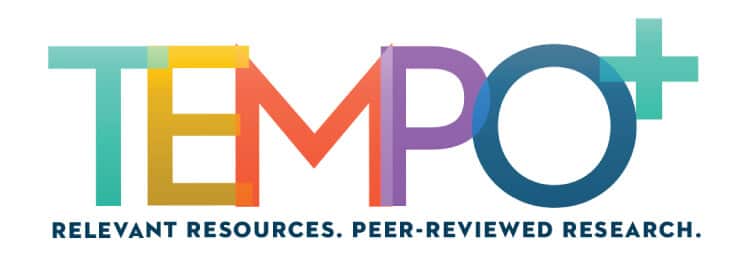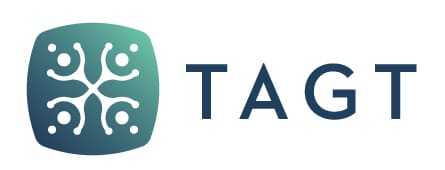In recent years, the pressure on teachers for their students to perform on state-mandated tests has caused the focus in education to shift to those students who are achieving at or just below academic standards. At the same time, there has been a growing trend of school boards considering the elimination of programs and services for the gifted students in their districts, opting instead to spread these students across heterogeneous general education classrooms. The result is a proliferation of gifted students who are forced to spend their time in classrooms led by teachers with little or no training in how to effectively meet their academic and social-emotional needs. This can lead to decreases in achievement and motivation (Gentry, 2014). Ability grouping strategies provide schools with opportunities to meet these demands while ensuring that the needs of gifted students are met.
Ability Grouping Versus Tracking
One issue that has plagued educators is the misconception that ability grouping and tracking are synonymous. People who view the two concepts as the same see both as elitist and nondemocratic. So, what is tracking, and how is it different from grouping?
Instituted in the early 20th century, tracking was intended to separate future white-collar workers into higher tracks from future manual laborers, who were placed in low tracks. Teachers’ perceptions and biases often led to placement of students from ethnic/racial minority groups into lower tracks, while White students, in teachers’ estimations and without thoughtful assessments, were forever tracked in rigorous academic tracks (Davidson Academy, 2021).
Plucker et al. (2010) offered the following as a distinction between ability grouping and tracking: “Grouping is flexible, targeted, and not permanent; tracking historically refers to an inflexible approach to placing students in tracks from which they could not move”(p. 31). The rigidity and negative perceptions of tracking led educators to consider more equitable options for gifted learners. Ability grouping strategies based in research strive to find pathways for success for all students, including the gifted.
When using ability grouping, students are strategically assessed and grouped according to their academic strengths or needs, providing gifted students with the challenge and complexity that they require (Rogers, 2006). Pierce et al. (2011) suggested that gains in achievement are found when gifted students are grouped together. Davidson Academy (2021) supported this assertion, noting that “when gifted students are grouped with similarly motivated and intelligent peers, they advance as much as a whole year compared to students of similar age and intelligence. This type of intellectual growth likely occurs because grouping allows gifted students to move at a pace that is appropriate for their abilities” (p. 3).
The flexibility of ability grouping erases the notion of elitism because students are placed within a group according to their assessed needs and abilities. For example, a gifted student who has demonstrated mastery of on-level content is provided the opportunity to go deeper into new concepts or to be accelerated to new advanced content. These assessments are ongoing to ensure students’ needs continue to be met as they progress through school, with adjustments made as necessary.
The Texas State Plan for the Education of Gifted/Talented Students
The Texas State Plan for the Education of Gifted/Talented Students (State Plan; Texas Education Association, 2019) provides guidance to schools and districts about state law and State Board of Education rules on grouping of gifted students. The Service Design section of the State Plan defines service design as:
A flexible system of viable service options provides a research-based learning continuum that is developed and consistently implemented throughout the district to meet the needs and reinforce the strengths and interests of gifted/talented students. (p. 7)
Additionally, this section outlines the following standards:
- 3.4 Gifted/talented students are ensured opportunities to work together as a group, work with other students, and work independently during the school day as well as the entire school year as a direct result of gifted/talented service options (19 TAC §89.3(1)).
- 3.5 Flexible grouping patterns and independent investigations are provided throughout the program design/services.
- 3.8 Acceleration and flexible pacing are employed, allowing students to learn at the pace and level appropriate for their abilities and skills, and are actively facilitated by district administrators, counselors, and teachers.
- 3.9 Local board policies are developed that enable students to participate in dual/concurrent enrollment, distance learning opportunities, and accelerated summer programs if available. (pp. 7–8)
The Curriculum and Instruction section of the State Plan adds to Service Design by stating that “Districts meet the needs of gifted/talented students by modifying the depth, complexity, and pacing of the curriculum and instruction ordinarily provided by the school [emphasis added]” (p. 9). Specifically, Standard 4.7 states, “Scheduling modifications are implemented in order to meet the identified needs of individual students” (p. 9). With this understanding, we will define and explore a variety of ability grouping designs, including acceleration strategies, for gifted students.
Types of Ability Grouping
Enrichment clusters provide opportunities for students to work in small groups on subjects of interest or passion. This type of grouping allows all students time to study topics not usually covered in basic content during a specified time each week. This facilitates time for students to work with like-minded peers.
Pull-out programs for the gifted, found in many Texas schools, are created for students to receive gifted services with a designated, certified teacher who offers challenging content that is interest-based. The pull-out may be daily, multiple times during the week, or weekly. When partnered with differentiation in the regular classroom, a pull-out program can meet the learning and social-emotional needs of gifted learners.
Cluster grouping is another option available to schools to meet the needs of their gifted students. Cluster grouping is the placement of gifted, high-ability, or high-achieving students together in a general education classroom with a teacher who is trained to provide appropriately challenging curriculum and instruction to meet their needs. Three nonnegotiable components of a traditional cluster programs are:
- groups of students identified as gifted and talented or high achieving are placed in classrooms with students of other achievement levels,
- curriculum and instruction for high-achieving students is differentiated by the teacher, and
- successful teachers of students in the high-achieving cluster classroom have a background and/or interest in working with gifted students (Gentry, 1999; Gentry & Fugate, 2012).
Magnet schools, special schools, and school-within-a-school models for the gifted are three other grouping options. These school models provide content specific to gifted students and their passions. They offer students with a focus that may include, but is not limited to, acceleration in academic subjects, STEM /STEAM, the arts, languages, or specific vocations.
Specialized schools may be controversial because they are exclusive to the academic and social-emotional needs of the gifted. Their entrance requirements are rigid, often based on IQ or achievement scores that may leave out or discourage underrepresented groups. Encouragingly, students who attend this type of school “have more positive feelings about school and stronger social connections with their peers” (Davidson Academy, 2021, p. 4).
Like a magnet or specialized school, a school-within-a-school is a model in which gifted students are grouped together in a small school environment for specialized content and instruction within a larger school with limited interaction with students outside of the program. For example, gifted students attending a middle school gifted academy are grouped together for core content subject areas and then attend elective subjects, such as physical education, music, and art, with mixed-ability students.
Acceleration
Support for acceleration is offered in a Position Statement issued by the National Association for Gifted Children (NAGC, 2004):
Educational acceleration is one of the cornerstones of exemplary gifted education practices, with more research supporting this intervention that any other in the literature of gifted individuals. The practice of educational acceleration has long been used to match high level student general ability and specific talent with optimal learning opportunities. (p. 1)
It should be stressed that acceleration should be a complement to existing services, not a replacement (Lupkowski-Shoplik et al., 2018) Johnsen et al. (2021) noted that successful acceleration includes three important principles:
- Learning is sequential and developmental.
- Children learn at different rates.
- Effective teaching involves a match between an individual child’s readiness to learn and the level of content presented. (p. 74)
Although there are 20 identified forms of acceleration, they all fall into one of two categories—grade-based or content-based acceleration (Johnsen et al., 2021). Grade-based acceleration can include options such as early entrance to school, whole-grade acceleration or grade-skipping, and early entrance to college, while content-based acceleration includes single-subject acceleration, curriculum compacting, and more.
Grade-Based Acceleration
Strategies for grade-based acceleration are designed to allow students to move through the K–12 continuum at their own pace. This may result in the 13 years of traditional school being completed in fewer years. A part of grade-based acceleration is often referred to as grade-skipping. This type of acceleration does not always include moving beyond age-based classes to the next grade. Other examples are early entrance to school and early entrance to college.
Early entrance to school is just what the term implies. A 4-year-old who can read and is socially mature, may enter kindergarten before reaching age 5. Another option for this type of acceleration is for the student who is 5 to skip kindergarten and move to first grade.
Grade-skipping or whole-grade acceleration entails a grade one student skipping second grade to join third grade in the next school year or in the second semester of second grade.
Early college entrance may take several forms. One example is that an advanced student who has spent five semesters in high school and has accrued credits through dual credit courses taken in middle school and high school may be considered graduated and enroll in college as a full-time student. A student may also choose to leave high school and enroll in an accepting university without the high school diploma, or the student may attend a high school that offers early college high school.
Content-Based Acceleration
The categories within this designation include six approaches defined below.
Single-subject acceleration offers a student or group of students to go to a higher grade-level classroom for instruction in a single subject, such as math or music. The student or group returns to their regular grade classroom for all other subjects. This option could also include a group moving to the next-level campus for a particular class, then returning to their home campus for all other instruction. Another approach for students’ instruction at a higher level than their home campus is for a teacher from the campus to come to the students for one class period. Two other examples include a student working beyond grade level through an online course and/or receiving credit for a course through a summer university or talent search program.
Curriculum compacting includes preassessment of students to determine completion or partial completion of content. The teacher uses the preassessment to determine how best to fill gaps in the content or to offer in-depth activities that provide challenge and are based on student interest.
NAGC (n.d.) provided the following definition for curriculum compacting:
Curriculum compacting is a technique for differentiating instruction that allows teachers to make adjustments to curriculum for students who have already mastered the material to be learned, replacing content students know with new content, enrichment options, or other activities. Researchers recommend that teachers first determine the expected goals of the unit or lesson in terms of the content, skills, or standards students must learn before assessing students to determine which ones have already mastered most or all of the specified learning outcomes. (para. 1)
Concurrent or dual enrollment involves a student being enrolled in a higher grade level or university course during the time in which the student would be taking the on-level course during the regular school day. The concurrent or dual enrollment replaces the on-level course.
Credit by examination or prior experience necessitates the student taking a state-sanctioned exam that proves proficiency in a course or school year. Districts may also opt to use the end-of-year test to determine student expertise in a course or courses. Portfolios may also be used to determine level of understanding. When proficiency is determined, the student may take more advanced work in the specified area.
Advanced Placement (AP) courses are college-level courses at the middle or high school level. Credit is given for the course when students receive scores at the proficient level of the AP exam. The receiving university sets the standard for acceptance of the student’s score. (Note. Students should inquire into the college or university they will attend to learn about their standards for acceptance.)
International Baccalaureate (IB) programs allow students to develop their learning pathways. According to Lupkowski-Shoplik et al. (2018), the following applies to IB:
Advanced students may participate in the IB program, taking the corresponding university-level curricula. At the end of high school, the students complete an international examination, receiving advanced standing and course credits upon matriculation to university. (p. 10)
Texas’s Senate Bill 79 R111 provides that “the IB Diploma carries at least 24 hours of college credit if the student scores 4 or above on the IB exams. Students who only take one or two IB course exams should contact their college or university about acceptance of course credit.”
Conclusion
For far too long, educators have conflated research-based, flexible ability grouping with the practice of tracking, which has historically been used as a form of segregation in schools. Understanding the many forms of ability grouping strategies available, and the flexibilities provided within each, is important to tailoring programs and services that best meet the needs of all students. By giving gifted students the time that they need to work and learn together, achievement, interest, and motivation are increased through the combination of intellectual challenge, advanced subject matter, and the use of high-level thinking skills (Gentry & Fugate, 2012). In our next article we will take a more in-depth look at promising practices in grouping gifted students. We will also address how gifted specialists can ensure that students are being recognized and grouped appropriately and how they can help educators implement these strategies.
References
Davidson Academy. (2021, July 30). Ability grouping for gifted students. https://www.davidsonacademy.unr.edu/blog/ability-grouping-for-gifted-students
Gentry, M. (1999). Promoting student achievement and exemplary classroom practices through cluster grouping: A research-based alternative to heterogeneous elementary classrooms [RM99138]. The National Research Center on the Gifted and Talented, University of Connecticut.
Gentry, M. (with Paul, K. A., McIntosh, J., Fugate, C. M., & Jen, E.). (2014). Total school cluster grouping and differentiation: A comprehensive, research-based plan for raising student achievement and improving teacher practices (2nd ed.). Prufrock Press.
Gentry, M., & Fugate, C. M. (2012). Cluster grouping options: Total school cluster grouping. In C. M. Callahan & H. L. Hertzberg-Davis (Eds.), Fundamentals of gifted education: Considering multiple perspectives (pp. 212–225). Routledge.
Johnsen, S. K., Simonds, M., & Voss, M. (2021). Implementing evidence-based practices in gifted education: Professional learning modules on universal screening, grouping, acceleration, and equity in gifted programs. Prufrock Press.
Lupkowski-Shoplik, A., Behrens, W. A., & Assouline, S. G. (2018). Developing academic acceleration policies: Whole grade, early entrance, and single subject. Acceleration Institute at the Belin-Blank Center.
National Association for Gifted Children. (n.d.). Curriculum compacting. https://www.nagc.org/resources-publications/gifted-education-practices/curriculum-compacting
National Association for Gifted Children. (2004). Acceleration [Position statement]. https://www.nagc.org/sites/default/files/Position%20Statement/Acceleration%20Position%20Statement.pdf
Pierce, R. L., Cassady, J. C., Adams, C. M., Speirs Neumeister, K. L., Dixon, F. A., & Cross, T. L. (2011). The effects of clustering and curriculum on the development of gifted learners’ math achievement. Journal for the Education of the Gifted, 34(4), 569–594. https://doi.org/10.1177/016235321103400403
Plucker, J. A., Burroughs, N., & Song, R. (2010). Mind the (other) gap!: The growing excellence gap in K–12 education. Center for Evaluation & Education Policy.
Rogers, K. B. (2006). A menu of options for grouping gifted students. Prufrock Press.
Texas Education Agency. (2019). Texas state plan for the education of gifted/talented students. https://tea.texas.gov/Academics/Special_Student_Populations/Gifted_and_Talented_Education/Gifted_Talented_Education
Ability Grouping Options to Meet the Needs of Gifted Learners PDF







